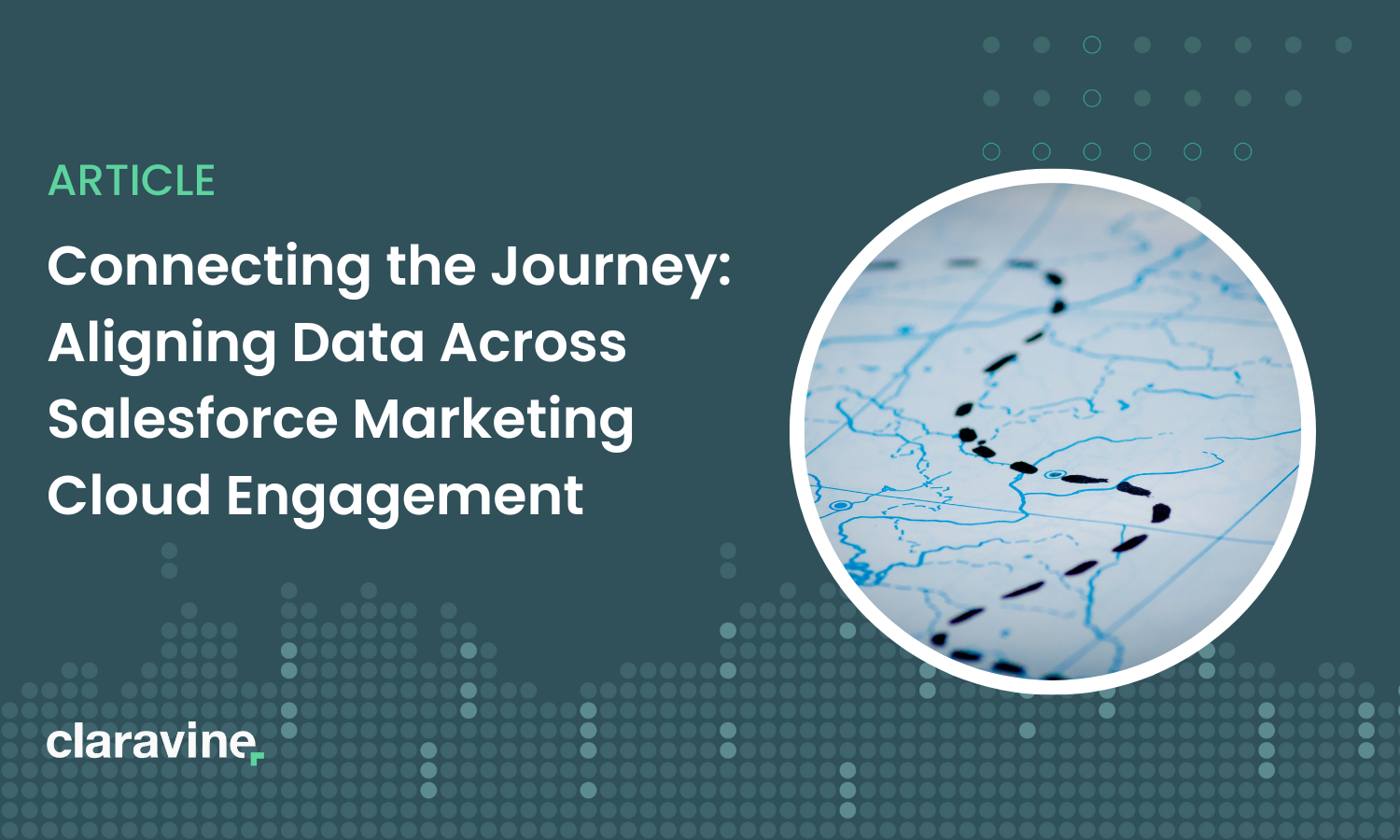Connecting the Journey: Aligning Data Across Salesforce Marketing Cloud Engagement

Freshman year of college, before Google maps or even smart phones were available, a group of us were sent on a scavenger hunt in an unfamiliar town armed with fragments of different maps. Some pieces had cartoonishly drawn landmarks, some were street maps, and all of them were printed at different scales. Whenever we figured out what piece of map corresponded to our location – which was very difficult because locations were distorted or missing – we could hardly get an overall sense of the place.
This kind of challenge may seem familiar for marketers who regularly reconcile customer interactions and measurement data across disparate systems: aligning targeting, creative, costs and performance data can require reconciling data from multiple systems that don’t make it easy to do that.
Although it’s difficult enough for most practitioners, it becomes even more complex for marketers who use dynamic decisioning to personalize communications with their customers. In a CRM, for example, it is commonplace for Salesforce Marketing Cloud Engagement email templates to pull in creative assets based on a particular journey’s personalization triggers and rules; knowing exactly what rendered on a consumer’s screen becomes difficult, and analyzing the collective impact of the creative becomes tricky.
Now, say that the email clicks through to a landing page that is also dynamically optimized, this time by a Content Management System (CMS) like Adobe Experience Manager (AEM). The problem of understanding what rendered on each consumer’s screen, and its impact on overall performance, becomes compounded with the hundreds or thousands of AEM assets, some of which may be duplicate versions of assets in Salesforce Marketing Cloud.
It gets even worse when organizations use optimization tools that sit outside of Salesforce and AEM, use dynamic ad serving, or use sophisticated algorithms to optimize media. There are no native IDs that identify particular concatenations of different creative assets, simply coming up with a data set to analyze is a challenge. Piecing together a consumer’s journey is not only like trying to scotch-tape together a single map out of many maps…its doing that where a significant number of the pieces of the maps are missing in the first place. The problem is likely to be exacerbated by AI agents that will make it easier for non-technical practitioners to setup more campaigns across more channels, making fragmentation worse.
Claravine addresses fragmentation by allowing marketers to centralize their data standards so they can easily align campaigns, placements, journeys and assets across disparate platforms.
We have built connectors into many of the most widely used marketing platforms, and recently released our integration into Salesforce Marketing Cloud Engagement (formerly ExactTarget). Using this connector, as well as some of our other tools, marketers will be able to:
- Generate IDs that allow creative assets in Salesforce Marketing Cloud Engagement to become aligned across platforms. This improves the signal-to-noise ratio of datasets where the same assets have multiple, uncorrelated IDs.
- Create centralized metadata tables that describe assets in Salesforce Marketing Cloud Engagement and other platforms: this could facilitate the analysis of different “renderings” of an email template or page generated dynamically which contain similar assets. A satisfied consumer may have had their email personalized to have a blue background, and another may have seen a red background. By analyzing the metadata of both, the analyst determines both versions had an “optimistic CTA” that improved outcomes.
- Keep names of assets, journeys and templates consistent across Salesforce Marketing Cloud Engagement so it’s easier to properly align them during setup
With Claravine’s connector, organizations can normalize data from different platforms into useful insights. The data standard, along with connectors into different systems, allows marketers to upgrade the “franken-map” from our scavenger hunt into a “Google Earth map” where users can zoom in and out and layer different types of data.
Are you interested in discussing how we can ease data alignment between Salesforce Marketing Cloud Engagement and other systems? Already a Customer? Contact Support. New to Claravine? Our team is ready to talk.


